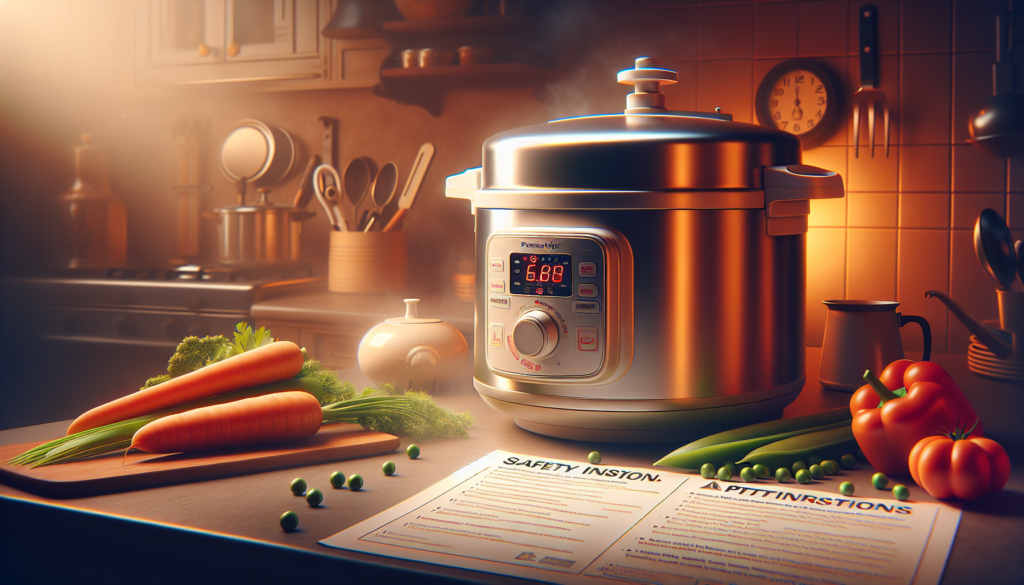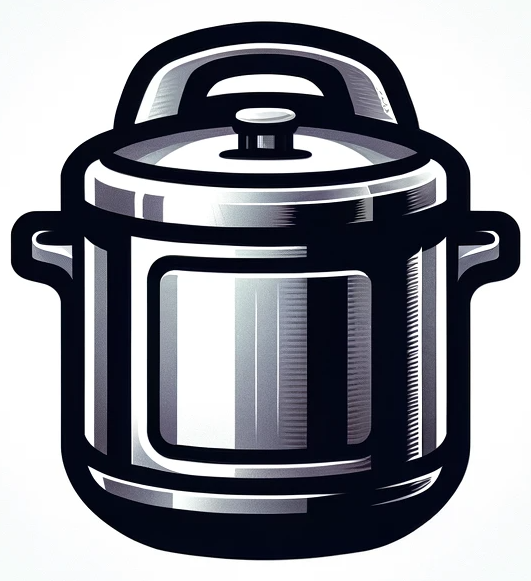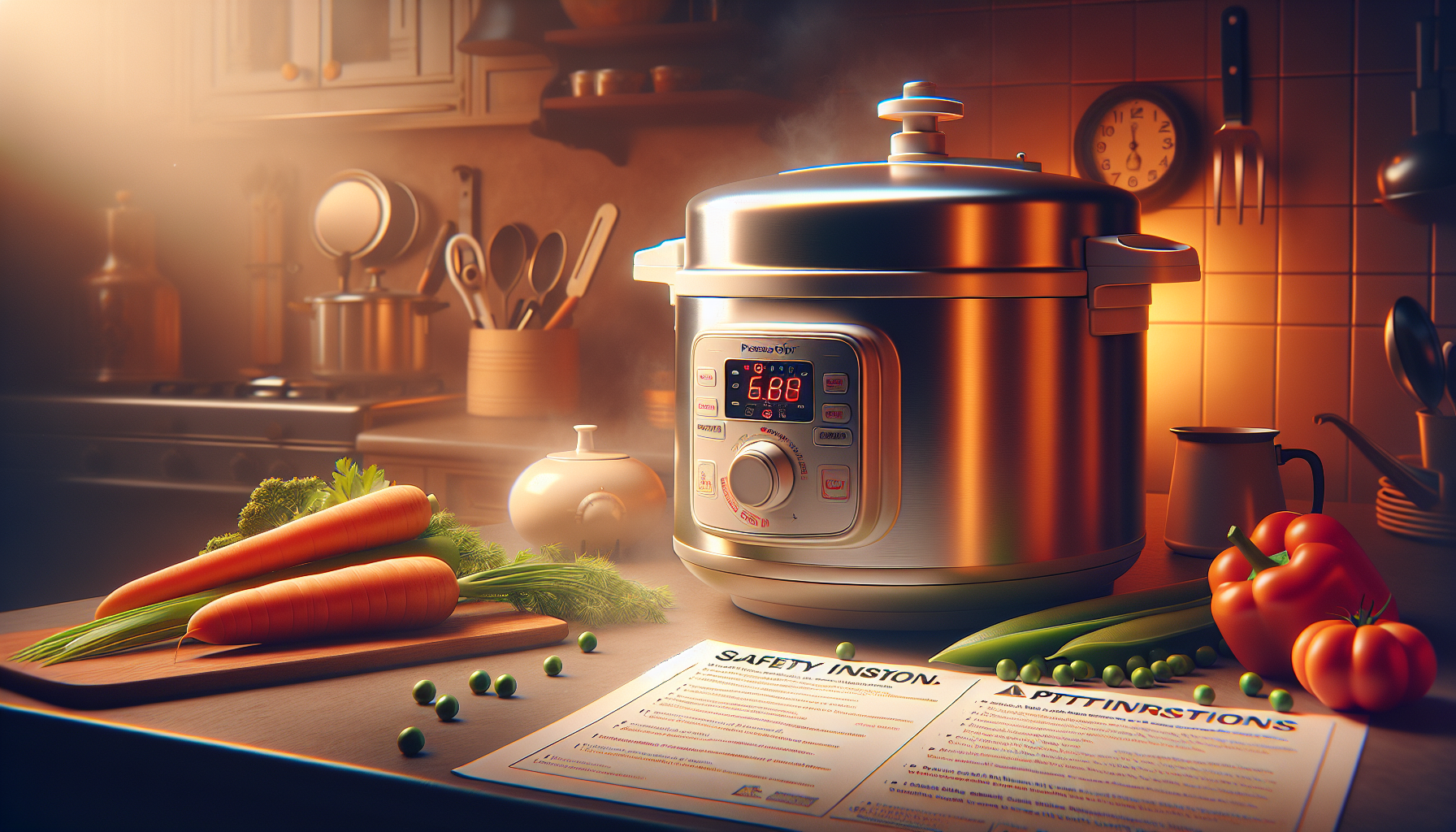In today’s fast-paced world, the pressure cooker has become a kitchen staple, promising quick and convenient meals at the push of a button. But amidst the convenience, have you ever wondered if pressure cookers are truly safe and healthy? With their steam-blasting capabilities and reduced cooking times, these culinary devices have certainly revolutionized the way we prepare meals. However, there has been much debate surrounding their safety and potential health impacts. In this article, we will explore the pros and cons of pressure cookers, shedding light on whether they are indeed safe and healthy for everyday use.

CHECK OUT PRESSURE COOKERS ON AMAZON
Pressure Cookers: A Brief Overview
Pressure cookers are versatile kitchen appliances that have gained popularity in recent years due to their ability to cook food quickly and efficiently. They work by creating a high-pressure environment inside a sealed pot, which raises the boiling point of water and thus reduces cooking time. This article will explore the definition and functioning of pressure cookers, as well as their safety features, potential risks, and health benefits.
Definition of pressure cookers
A pressure cooker is a sealed pot with a gasketed lid and a locking mechanism that traps steam inside. It is designed to cook food at a higher temperature than regular cooking methods, thanks to the increased pressure created inside the pot. This increased pressure builds up faster and significantly reduces cooking time.
How pressure cookers work
Pressure cookers work based on simple physics principles. Water normally boils at a temperature of 100 degrees Celsius (212 degrees Fahrenheit) at sea level. However, when the pressure increases inside a pressure cooker, the boiling point of water also increases. By increasing the pressure in the sealed pot, the boiling point can rise to around 121 degrees Celsius (250 degrees Fahrenheit), cooking the food at a much higher temperature and reducing cooking time.
Safety Features of Pressure Cookers
Pressure cookers can be intimidating due to the potential risks associated with high-pressure cooking. However, modern pressure cookers are equipped with various safety features to ensure the user’s safety and prevent accidents. Let’s explore some of these safety features in detail.
Pressure release valves
One of the key safety features of pressure cookers is the pressure release valve. This valve is designed to release excess pressure from the cooker, preventing an unsafe buildup of pressure. If the pressure inside the cooker exceeds a certain limit, the valve will automatically release steam, allowing the pressure to decrease to a safe level. This feature ensures that the pressure cooker doesn’t become a potential hazard.
Locking mechanisms
To prevent the risk of accidentally opening the pressure cooker during cooking, modern pressure cookers are equipped with effective locking mechanisms. These mechanisms keep the lid securely in place throughout the cooking process, ensuring that the pressure inside the pot remains constant. Some pressure cookers even have multiple safety locks, providing an extra layer of protection against accidental opening.
Lid interlocks
Another safety feature of pressure cookers is the lid interlock system. This system ensures that the pressure cooker cannot be opened when there is still pressure inside. The lid interlock system typically consists of a mechanism that prevents the lid from being opened until the pressure has been completely released. This feature ensures that users cannot accidentally open the cooker and risk being exposed to hot steam or food.
Potential Risks
While pressure cookers are generally safe to use when proper precautions are taken, it is important to be aware of the potential risks associated with high-pressure cooking. Understanding these risks can help users take necessary precautions and use the pressure cooker safely.
Burning and scalding
One of the risks associated with pressure cookers is the potential for burns and scalds. The high temperature and pressure inside the cooker can cause hot liquids or steam to escape when the pot is opened without proper precautions. It is crucial to follow the manufacturer’s instructions and release the pressure completely before opening the lid to avoid the risk of burning or scalding.
Pressure build-up
A pressure cooker relies on the buildup of pressure to cook food quickly, but if the pressure builds up beyond a safe level, it can become hazardous. This can happen if the pressure release valve is blocked or if the cooker is not used correctly. It is essential to regularly check and clean the pressure release valve and ensure it is functioning properly. Additionally, it is important to follow the recommended cooking times and avoid overfilling the cooker, as these can contribute to unsafe pressure build-up.
Explosions
While rare, pressure cooker explosions can occur if the pressure inside the cooker reaches dangerous levels and the safety features fail. This is why it is crucial to invest in a quality pressure cooker from a reputable brand and ensure that all safety features are in proper working condition. Regular maintenance and following the manufacturer’s instructions can further minimize the risk of explosions.
Is Pressure Cooking Healthy?
Pressure cooking is not only a time-saving cooking method but also boasts several health benefits. Let’s explore why pressure cooking is considered a healthy cooking technique.
Retention of nutrients
One of the key benefits of pressure cooking is its ability to retain nutrients in the food. Due to the reduced cooking time, pressure cookers minimize the exposure of food to heat and water, thereby preserving more vitamins and minerals. This is particularly beneficial for cooking vegetables, which can retain their vibrant colors and nutrients when cooked under pressure.
Shorter cooking time
Another health benefit of pressure cooking is its shorter cooking time. Traditional cooking methods often require longer cooking durations, which can lead to nutrient loss. Pressure cooking significantly reduces cooking time, which not only helps to retain nutrients but also maintains the natural flavors and textures of the food.
Reduced need for fat
With pressure cooking, you can achieve flavorful and tender results without the need for excessive fats, oils, or butter. The sealed environment of the pressure cooker allows the food to cook in its own juices, enhancing the flavor and reducing the need for added fats. This makes pressure cooking a healthier option for those looking to reduce their fat intake without compromising on taste.
Effect on Food Quality
Pressure cooking not only offers health benefits but also has a positive impact on the quality of cooked food. Let’s delve into some ways pressure cooking enhances the taste and texture of your meals.
Preserving taste and flavor
One of the notable advantages of pressure cooking is that it helps to enhance the taste and flavor of food. The high pressure and sealed environment allow the flavors of the ingredients to meld together, resulting in more vibrant and concentrated flavors. Whether it’s a savory stew or a delicious curry, pressure cooking can intensify the taste and make your meals even more delicious.
Tenderness and texture of food
Pressure cooking is renowned for its ability to tenderize even the toughest cuts of meat. The high pressure and moisture created inside the pot help break down tough fibers, resulting in tender and succulent meat. Additionally, pressure cooking can also soften legumes and grains, making them easier to digest and reducing cooking time compared to traditional methods.
Maillard reaction
The Maillard reaction is a chemical reaction that occurs when food browns during cooking, creating rich and complex flavors. Pressure cooking, with its high heat and sealed environment, promotes the Maillard reaction, enhancing the taste, color, and aroma of cooked food. This reaction is particularly beneficial for creating deep flavors in dishes like braised meats, caramelized onions, or roasted vegetables.
Healthy Cooking Techniques
Pressure cooking is undoubtedly a healthy cooking method, but it’s always good to have a variety of techniques at your disposal. Here are three other healthy cooking techniques you can incorporate into your culinary repertoire:
Steaming
Steaming is a gentle cooking method that helps to preserve nutrients and flavors in food. It involves cooking food with steam, either by placing it in a steam basket or using a dedicated steamer. Steaming vegetables, seafood, or grains can help retain their natural colors, textures, and nutrients, making it a popular choice for health-conscious individuals.
Boiling
Boiling is a simple and versatile cooking technique that can be used for a wide range of ingredients. While it may result in some nutrient loss due to prolonged exposure to water, boiling can still be a healthy cooking option. It is particularly useful for cooking pasta, grains, and legumes, as well as blanching vegetables before incorporating them into other dishes.
Stir-frying
Stir-frying is a quick and healthy cooking technique that originated in Asian cuisine. It involves cooking small pieces of food at high heat in a small amount of oil. Stir-frying allows for quick cooking, which helps to retain the nutrients and natural flavors of the ingredients. This method is commonly used for cooking vegetables, poultry, and seafood, resulting in vibrant and nutritious meals.
Comparative Analysis: Pressure Cooking vs Other Methods
To truly understand the advantages of pressure cooking, it’s important to compare it to other common cooking methods. Let’s explore how pressure cooking stacks up against other culinary techniques in terms of nutrient retention, cooking time, and energy efficiency.
Nutrient retention comparison
When it comes to preserving nutrients, pressure cooking outperforms most other cooking methods. The reduced cooking time and minimal exposure to heat and water help retain a higher percentage of vitamins and minerals compared to boiling, baking, or frying. While steaming is another cooking method known for its nutrient retention, pressure cooking offers similar benefits while significantly reducing cooking time.
Cooking time comparison
One of the standout features of pressure cooking is its ability to drastically reduce cooking time. Compared to methods like baking or slow cooking, which can take hours, pressure cooking can prepare meals in a fraction of the time. For example, tough cuts of meat that typically require hours of roasting or slow cooking can be tenderized and cooked to perfection in a pressure cooker in a matter of minutes.
Energy efficiency comparison
Pressure cooking is not only a time-saving method but also an energy-efficient one. Due to the shorter cooking time, pressure cookers require less energy to prepare a meal compared to traditional cooking methods. The sealed environment also helps to retain heat efficiently, reducing the need to repeatedly increase the heat during the cooking process. This makes pressure cookers a greener and more sustainable choice in the kitchen.
CHECK OUT PRESSURE COOKERS ON AMAZON
Tips for Safe Pressure Cooking
While pressure cookers are generally safe to use, it’s essential to follow a few key safety guidelines to ensure optimal usage and minimize the risks associated with high-pressure cooking. Here are some tips for safe pressure cooking:
Read and follow the instruction manual
Before using your pressure cooker, it is important to thoroughly read the instruction manual provided by the manufacturer. The manual will provide specific guidelines on how to operate and maintain the pressure cooker safely. Understanding the features and functions of your pressure cooker will help you use it properly and avoid accidents.
Use the recommended amount of liquid
Pressure cookers require a specific amount of liquid to create the necessary steam for cooking. It is vital to follow the manufacturer’s recommendations regarding the minimum and maximum amount of liquid required. Insufficient liquid can lead to the pot drying out or improper pressure build-up, while excessive liquid can cause the pot to overflow or hinder the sealing process.
Do not overfill the pressure cooker
Overfilling the pressure cooker can result in unsafe pressure levels or blockage of the pressure release valve. To ensure optimal performance and safety, only fill the pressure cooker up to two-thirds of its capacity for liquids, or halfway for solid ingredients. This allows enough space for the food to expand during cooking and prevents any potential accidents.
Conclusion
In conclusion, pressure cookers are safe and healthy kitchen appliances that offer numerous benefits for those looking to save time and cook nutritious meals. With their efficient cooking methods, pressure cookers retain nutrients, enhance flavors, and tenderize tough ingredients. While it is important to be aware of the potential risks associated with high-pressure cooking, adherence to safety precautions and proper usage can ensure a safe and enjoyable cooking experience. By incorporating a pressure cooker into your culinary routine and exploring other healthy cooking techniques, you can make delicious meals that are both nutritious and time-efficient. So, start pressure cooking and enjoy the benefits of safe and healthy cooking in your own kitchen!

